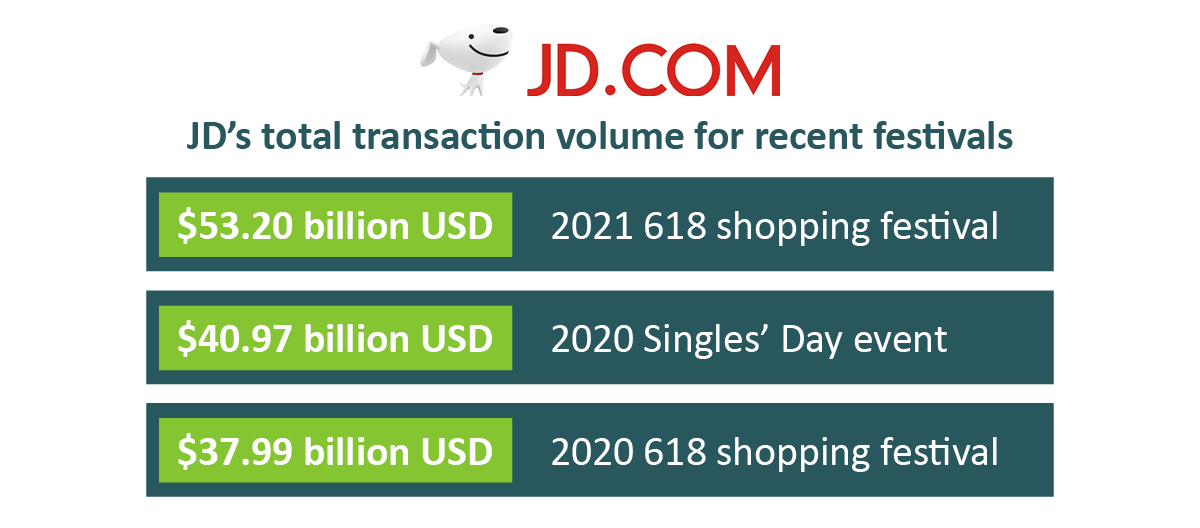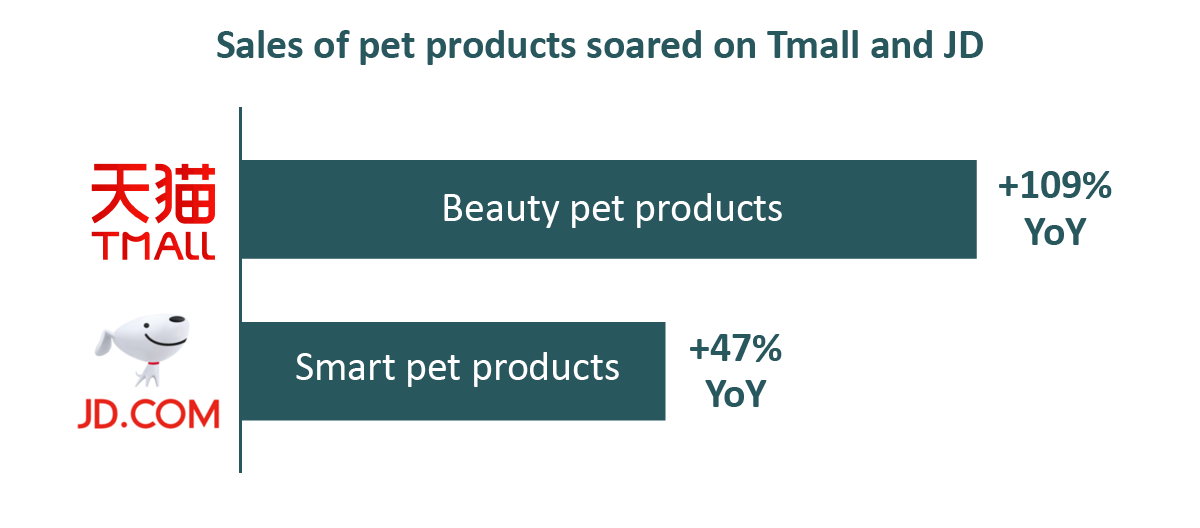Key takeaways from China’s 618 shopping festival in 2021
618 is the second-largest shopping festival in China, behind only Singles’ Day in November. 2021’s edition of the e-commerce shopping event set new sales records, cementing the prominence of e-commerce in China’s consumer landscape. Here are WPIC’s key takeaways from this year’s event.
E-commerce is China’s “new normal”
Alibaba and JD.com set record numbers in 2020’s 618 shopping festival, in large part due to the pandemic. Restrictions and lingering health concerns about COVID-19 pushed many consumers to make purchases online. While overall consumption in China declined by 3.9% in 2020, online retail sales climbed 10.9%.
Historically for China shopping festivals, each year’s event is larger than that of the preceding year. But with the impact of COVID-19 in boosting 2020 online sales, observers of China’s e-commerce landscape were not certain if the trend would hold in 2021, with some arguing that 2021’s China shopping festivals could decrease from 2020.
However, the available numbers suggest that 2021’s 618 festival was, in fact, larger than 2020—without benefiting from a short-term pandemic bump.
 While Alibaba has not released its final sales figures, JD.com has reported a total transaction volume of roughly $53 billion USD. This figure is up from $37.99 billion USD during 2020’s 618, and $40.97 billion during 2020’s Singles’ Day festival.
While Alibaba has not released its final sales figures, JD.com has reported a total transaction volume of roughly $53 billion USD. This figure is up from $37.99 billion USD during 2020’s 618, and $40.97 billion during 2020’s Singles’ Day festival.
The trend is clear: consumers are sticking with e-commerce.
Brands are waking up to this new reality as well. JD reported that over 30,000 new brands were launched during 618, offering 2.4 million new products. Meanwhile, Alibaba said that 250,000 merchants and brands participated in 618 this year, a figure more than double from last year, with 1.4 million new products on offer.
The record numbers also bode well for the health of the Chinese consumer, including in rural areas and lower-tier cities. Alibaba noted that Cainiao’s rural division handled 485% more packages in remote areas compared to last year, while luxury sales from tier-3 and tier-4 cities were up 80%.
618 sector takeaways in 2021
In 2021’s 618, the top three sectors by total GMV were household appliances, mobile communications, and clothing and accessories, according to various reports.
 A few product categories stood out. As more and more young Chinese are choosing to become pet owners, the pet product market has boomed over the last few years. Tmall said that sales of “pet beauty products” grew by 109% year over year, while “smart pet products” grew by 47% year over year on JD.
A few product categories stood out. As more and more young Chinese are choosing to become pet owners, the pet product market has boomed over the last few years. Tmall said that sales of “pet beauty products” grew by 109% year over year, while “smart pet products” grew by 47% year over year on JD.
In the beauty space, Tmall reported a 40% increase in men’s cosmetics sales and a roughly 200% surge in niche perfume sales, reflecting changing beauty standards and a demand for higher quality products in China.
The pandemic and travel restrictions also seem to be altering lifestyle and leisure choices among Chinese consumers. As camping grows in popularity in China—spreading beyond a group of committed enthusiasts—sales of “glamping” (glamour camping) products grew by over 130%, according to Alibaba. The company also reported that more than 300,000 people bought fishing-related products, and sales of surfboards climbed 40%.
WPIC’s view of 2021’s 618 shopping festival
In 2020, our data suggested that consumers who moved online at the start of the pandemic would embrace the advantages of China’s e-commerce ecosystem and modify their consumption patterns over the long run. Record numbers during 2021’s first major China shopping festival suggest that this prediction is holding true.
With healthy consumption numbers and a recovering economy, China is clearly open for business.
Across multiple marketplaces, direct-to-consumer commerce is booming in China, indicating that the time has never been better for brands from around the world to embrace e-commerce in the country.
Looking to activate your brand on China’s leading marketplaces? View WPIC’s Tmall and JD solutions, or get in touch below!
